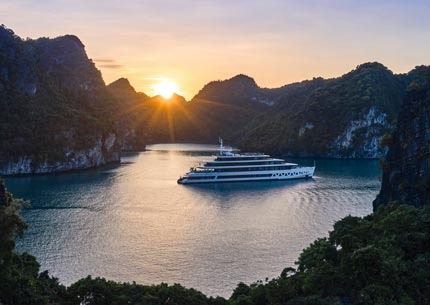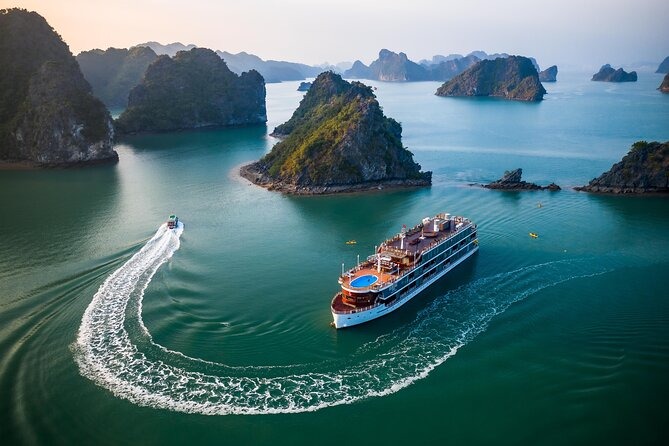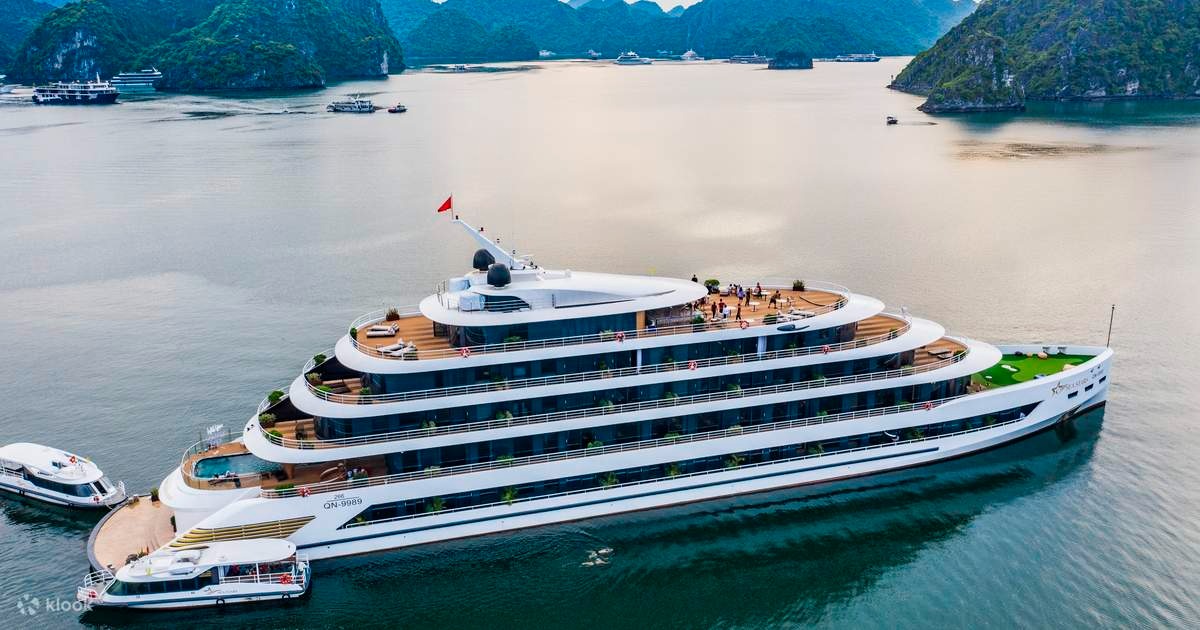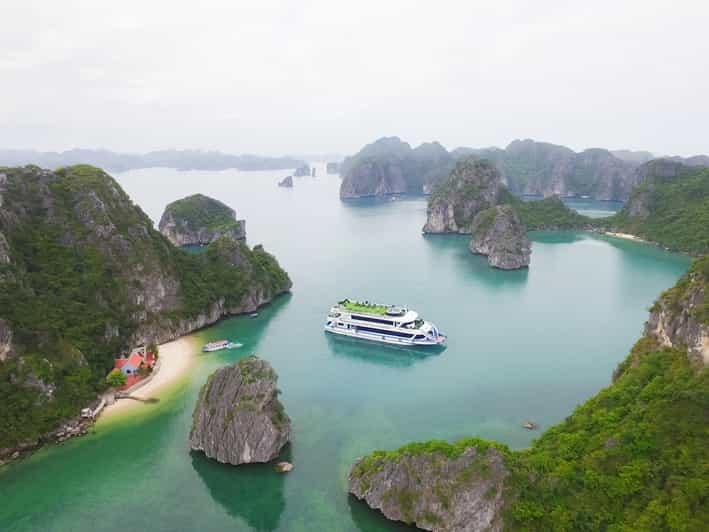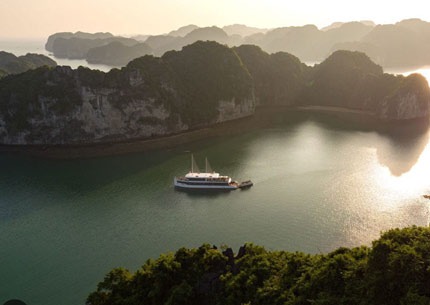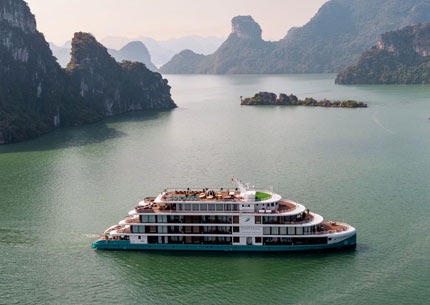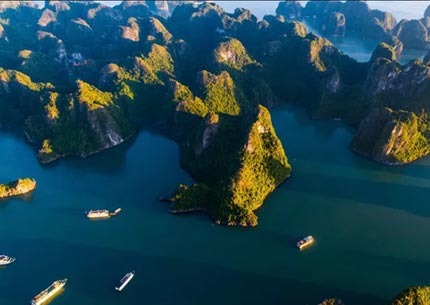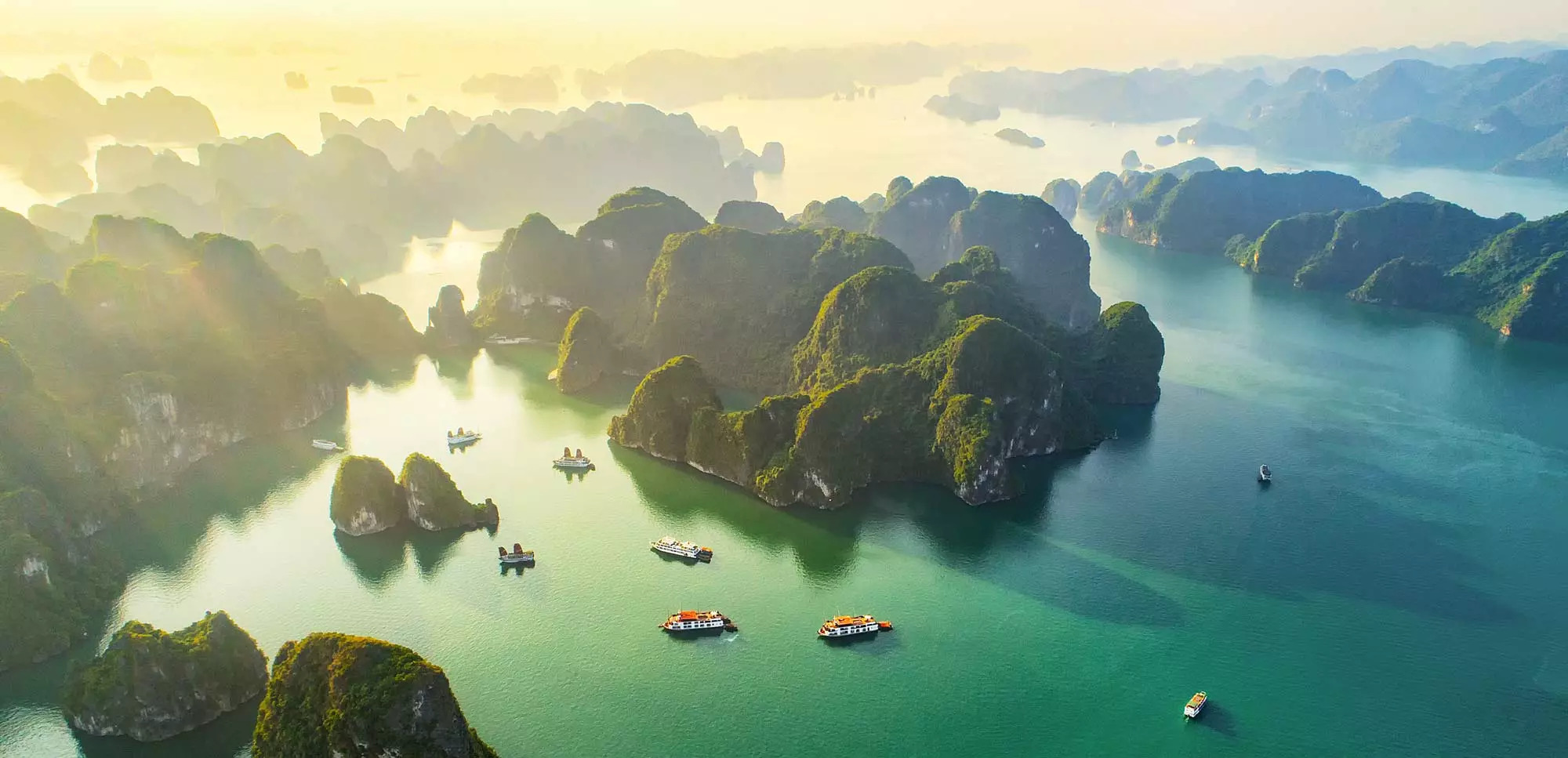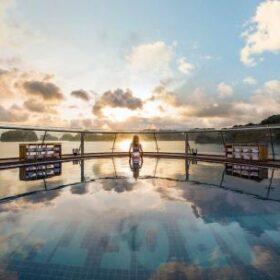What You Need to Know Before Visiting Halong Bay
Halong Bay is generally safe for tourists when proper precautions are taken. This UNESCO World Heritage Site welcomes millions of visitors annually with relatively few incidents. However, like any natural destination, understanding potential risks and safety measures is essential for a worry-free experience.
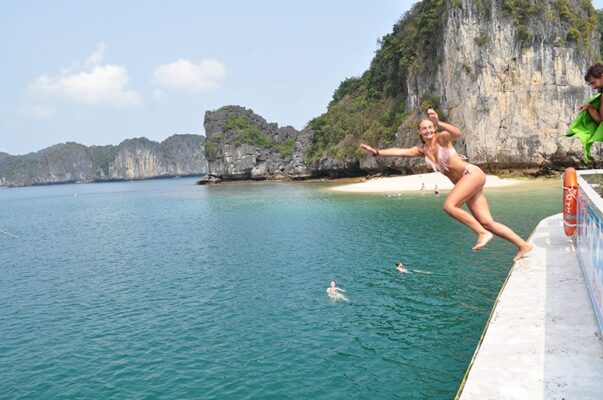
Quick Safety Facts About Halong Bay:
- Overall safety rating: High when booking with reputable operators
- Swimming safety: Good during appropriate seasons with proper precautions
- Weather hazards: Typhoon risk (June-September)
- Crime rate: Low, with occasional petty theft in tourist areas
- Water quality: Variable, with cleaner areas in Lan Ha Bay and more remote regions
- Medical facilities: Limited on boats; comprehensive care available in nearby cities
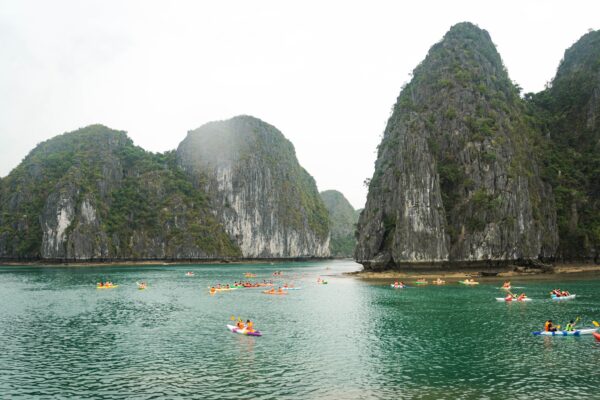
Is Swimming in Halong Bay Safe?
Swimming in Halong Bay can be perfectly safe and incredibly rewarding when done properly. The emerald waters nestled among ancient limestone karsts create an unforgettable experience, but safety should remain your top priority.
Best Times for Safe Swimming in Halong Bay
Seasonal Safety Considerations
Safest swimming months (April-June, September-November):
- Water temperatures: Comfortable 25-28°C (77-82°F)
- Weather conditions: Generally stable with less precipitation
- Visibility: Excellent underwater clarity
- Jellyfish presence: Minimal
For the best experience during these optimal months, consider a 2-day Halong & Lan Ha Bay 5-star cruise package that offers swimming opportunities in the safest areas.
Moderate risk season (July-August):
- Benefits: Warmest water (28-30°C/82-86°F)
- Risks: Potential typhoons and sudden storms
- Required precautions: Check weather forecasts daily, follow guide instructions
Higher risk season (December-March):
- Water temperatures: Cooler 17-22°C (62-72°F)
- Visibility: Often reduced due to wind-stirred waters
- Swimming availability: Limited, with many operators restricting activities
- Safety equipment: Wetsuits recommended if swimming is permitted
Optimal Swimming Times Throughout the Day
- Early morning (6:00-9:00 AM): Safest with calmer waters and fewer boats
- Midday (11:00 AM-2:00 PM): Good visibility but increased boat traffic
- Late afternoon (4:00-6:00 PM): Beautiful lighting with moderate safety conditions
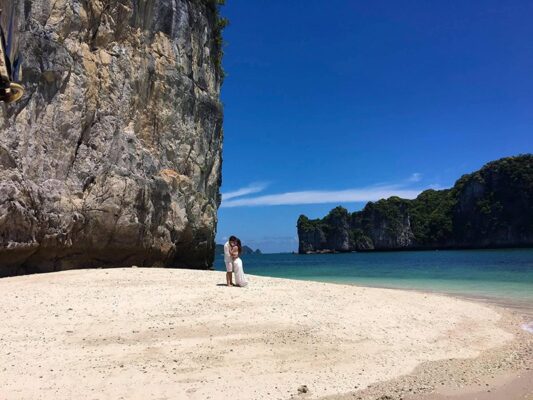
Safest Swimming Locations in Halong Bay
When evaluating safety, not all swimming spots in Halong Bay are created equal. These locations offer the best combination of safety and natural beauty:
1. Titop Island’s Hidden Cove
Beyond the main beach lies a secluded cove accessible via a short hike. This area offers:
- Natural protection from currents
- Fewer swimmers causing disruption
- Cleaner water quality than the main beach
2. Lan Ha Bay Swimming Areas
While technically adjoining Halong Bay, Lan Ha Bay provides:
- Significantly less boat traffic
- Higher water quality due to fewer visitors
- Designated swimming zones with monitoring
For the most comprehensive experience of this safer swimming region, consider a 3-day 5-star Lan Ha Bay and Halong Bay cruise, which allows more time to explore multiple swimming spots safely.
3. Tung Sau Pearl Farm Waters
This unique location offers exceptionally safe swimming conditions:
- Meticulously maintained water quality (necessary for pearl cultivation)
- Regular monitoring by farm staff
- Natural protection from stronger currents
4. Luon Cave Protected Lagoon
Access through a limestone archway creates a naturally sheltered swimming environment:
- Calm, wave-free waters
- Natural boundaries preventing drift
- Supervision from kayak guides
5. Ba Trai Dao Seasonal Beach
This temporary beach emerges only during specific low tides:
- Shallow, gradual-entry swimming
- Visible boundaries for safe swimming areas
- Regular patrol by cruise staff during swimming sessions
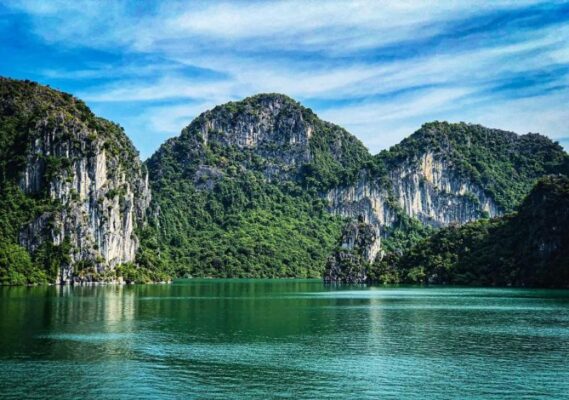
Comprehensive Safety Guidelines for Halong Bay Swimmers
Essential Pre-Swimming Safety Checklist
- Tour operator verification: Choose companies with safety certifications and positive safety reviews
- Weather assessment: Confirm appropriate conditions with multiple sources
- Medical disclosure: Inform guides about relevant health conditions
- Equipment inspection: Verify life jackets and safety gear meet standards
- Briefing attendance: Participate in all safety orientations offered
Critical Safety Protocols While Swimming
- Buddy system implementation: Never swim alone under any circumstances
- Boundary adherence: Stay within clearly marked safe swimming zones
- Floatation usage: Wear provided life jackets if you’re not a strong swimmer
- Current awareness: Watch for water movement around karst formations
- Guide compliance: Follow all instructions from trained staff immediately
Emergency Preparedness
- Distress signals: Learn the universal sign for swimming distress (one arm raised)
- Emergency contacts: Save local emergency numbers (usually 115 for Vietnam)
- First aid knowledge: Familiarize yourself with basic treatment for cuts and marine stings
- Location awareness: Maintain visual reference points during your swim
- Boat proximity: Always keep your cruise vessel or safety boat in sight
Environmental Hazards and Wildlife Safety
Marine Creatures and Appropriate Precautions
- Jellyfish presence: Most common May-August, with mild stings treatable with vinegar
- Sea urchins: Occasionally found near rocky areas; wear water shoes for protection
- Sharp coral: Maintain proper distance from reef formations
- Harbor pollution: Avoid swimming near busy ports and harbors
Weather and Natural Hazards
- Monsoon season risks: Flash storms during summer months require immediate exit from water
- Lightning protocol: Return to boats immediately when thunder is heard
- Fog conditions: Limited visibility requires staying especially close to guides
- Tide awareness: Some areas become hazardous during specific tidal conditions
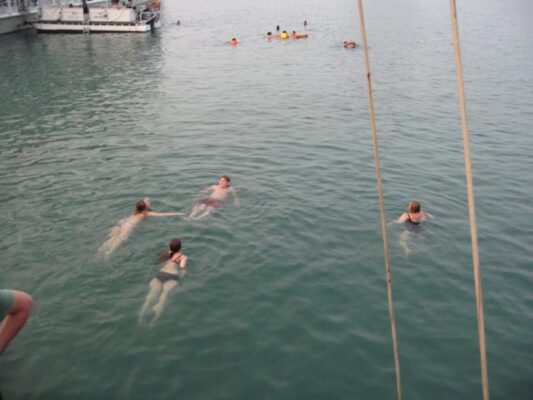
General Travel Safety in Halong Bay
Beyond swimming, overall safety in Halong Bay depends on making informed choices:
Cruise and Tour Operator Safety
- Safety record verification: Research operator safety history before booking
- Vessel maintenance standards: Look for newer boats or recently renovated vessels
- Staff certification: Confirm guides have proper safety training
- Emergency equipment: Verify presence of fire extinguishers, life rafts, and first aid kits
For a less crowded but equally beautiful alternative, consider a Bai Tu Long Bay 2-day cruise, which visits areas with fewer boats while maintaining high safety standards.
Accommodation Safety Considerations
- Onboard accommodation: Ensure proper emergency exits and procedures
- Mainland hotels: Choose properties with good security measures
- Fire safety: Verify working smoke detectors and clear evacuation routes
- Food safety: Select operators with proper food handling certifications
Health and Medical Preparedness
- Motion sickness preparation: Bring appropriate medication if prone to seasickness
- First aid kit: Pack personal medications and basic treatment supplies
- Medical facilities: Know the nearest hospital locations (Halong City, Hai Phong)
- Travel insurance: Ensure your policy covers emergency evacuation if needed
Family Safety: Is Halong Bay Safe for Children?
Halong Bay can be a safe family destination with appropriate planning:
- Age-appropriate cruises: Select family-friendly operators with child safety measures
- Child-specific life jackets: Ensure properly sized safety equipment is available
- Supervised swimming areas: Choose operators offering designated family swimming zones
- Child safety briefings: Attend specialized orientations for family groups
Solo Traveler Safety in Halong Bay
Independent travelers should take additional precautions:
- Group tour selection: Join established tours rather than arranging private options
- Cabin security: Use in-room safes and door locks consistently
- Communication plan: Establish check-in protocols with someone back home
- Local contact information: Maintain embassy/consulate details readily available
For assistance planning the safest experience, many travelers recommend consulting with Vietnam Marvel Travel, which has excellent safety reviews on TripAdvisor.
Sustainable and Responsible Swimming Practices
Safe swimming extends to protecting the environment that makes Halong Bay special:
- Sunscreen selection: Use only reef-safe, biodegradable products
- Wildlife interaction: Maintain appropriate distance from marine creatures
- Waste management: Pack out all personal items and trash
- Cultural respect: Follow local customs regarding appropriate swimming attire
Conclusion: Enjoying Halong Bay Safely
Halong Bay offers one of Vietnam’s most spectacular natural experiences, and with proper preparation, your visit can be both safe and unforgettable. By choosing reputable operators, respecting safety guidelines, and maintaining awareness of your surroundings, you can minimize risks while maximizing enjoyment of this remarkable UNESCO World Heritage Site.
Remember that safety standards continue to improve in this popular destination, but ultimate responsibility rests with each visitor to make informed decisions based on current conditions and personal abilities. With the right preparation, Halong Bay can be a safe, transformative travel experience that creates lasting memories.
- Hotline | WhatsApp: +84.978.358.422
- Phone | WhatsApp: +84.962.261.687
- Email: halongbayluxcruises@gmail.com
- vietnammarveltravel@gmail.com
- website:halongbayluxcruises.com
- Top Halong Bay Cruise Review on TripAdvisor

